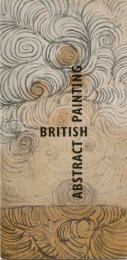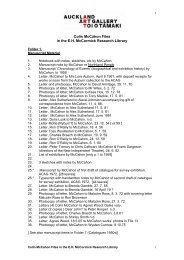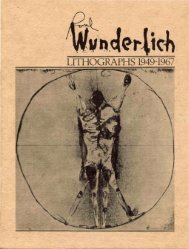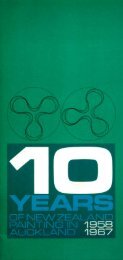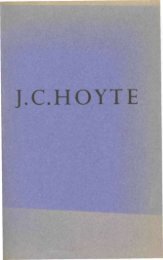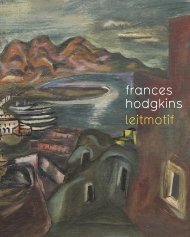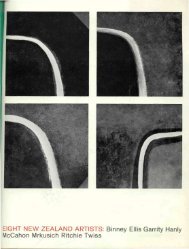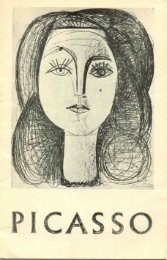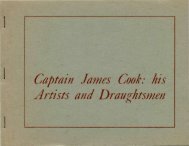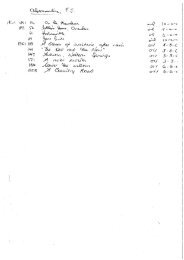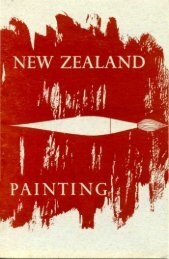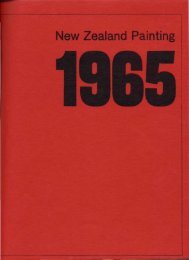Create successful ePaper yourself
Turn your PDF publications into a flip-book with our unique Google optimized e-Paper software.
Photographsfasteners (staples, paperclips, and pins) should beremoved as they may cause image staining or corrosion.EnclosuresNegatives and transparencies—should be individuallyenclosed. Choose envelopes, sleeves or folders madefrom acid-free, alkaline-buffered paper or one of threechemically stable plastics. These are polyester (includingMylar and Melinex), polyethylene (Tyvek), or polypropylene.Colour images are affected by moderate alkalinityand where paper enclosures are in direct contact, theseshould be pH neutral, made from 100% rag pulp.Prints—should be individually enclosed or interleaved.Choose envelopes, sleeves, folders (see also page63), interleaves or mat and mounting boards (see alsopage 62) made from 100% cotton rag or highly refinedwood pulp, buffered against changes in pH. Inert plastics(as above) can also be used. Colour prints and cyanotypesare affected by moderate alkalinity and wherepaper enclosures are in direct contact, these should bepH neutral, made from 100% rag pulp.Albums—there are two types of album to avoid asmaterials in each will destroy prints in time: ‘magnetic’albums and albums with PVC pages. Magnetic albumshave clear plastic overlay sheets which hold the photographsin place against a stiff card backing with finestripes of latex adhesive. After a few months, the adhesivecan become rigid so prints cannot be removed andafter a few years it causes discoloration and image loss.PVC is a plastic which slowly releases chemicals thatcause irreversible damage to all photographs. PVC isoften easy to identify by its smell—similar to that of newshower curtains or inflatable beach balls and paddlingpools. Replacing such albums should be a priority forimproving the storage of prints. It is a good idea to purchasea new album first.Older albums should be kept intact and protectedwith an acid-free cardboard box (see also page 63). If oldalbums are so deteriorated that they no longer protectthe prints inside, place the prints in a new, archivalalbum.Album pages should be made from good qualitypaper (100% cotton rag or highly refined wood pulp,buffered against changes in pH) and prints should beattached to the pages using photo corners. Never glueor tape a photograph into place. If photographs are onfacing pages, it is a good idea to interleave the pageswith acid-free tissue or paper.If plastic covers or sleeves are used, be sure theyare of suitable quality. Where a photographic storageenclosure is not identified as being safe for long-termphotographic storage, it most likely is not.Protective Boxes—photographs stored in boxesshould be kept in individual enclosures. Ordinary cardboardshould not be used and boxes should not containadhesives and staples which may be harmful to photographs.Boxes made of acid-free corrugated board aresuitable and these are available from conservation materialssuppliers (see also page 63). Some recently developedcard is designed to protect the box contents byabsorbing gaseous contaminants from the atmosphere.Microchamber board is one such material. This is particularlyuseful where small collections are to be protectedin areas with known air pollution.Wood, hardboard and chipboard all emit chemicalswhich cause photographs to deteriorate. Solander boxes(see also pages 16, 65), if used, must be sealed with polyurethane,epoxy or polyester varnish and allowed tocure for 3 months prior to use. Boxes can be stored onshelving made of steel with baked-on enamel.Cabinets, Cupboards and Shelving—steel filingcabinets are recommended for the storage of photographs.These are non-combustible and can be easilycoated with inert coatings such as baked-on enamel oranodised aluminium. If wooden shelving is used, all surfacesmust also be properly sealed. The use of woodenstorage furniture is not endorsed by all conservators.Storage cupboards, cabinets and shelves shouldallow air circulation but also provide protection againstfire and water.Environment—avoid placing photographs in attics,26



